Human Orbital Spaceflights
![]()
International Flight No. 102STS-51BChallenger (7)17th Space Shuttle missionUSA |
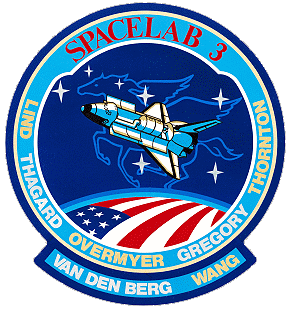 |
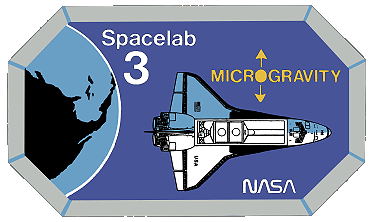 |
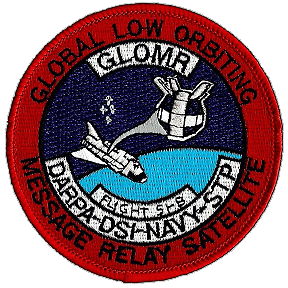 |
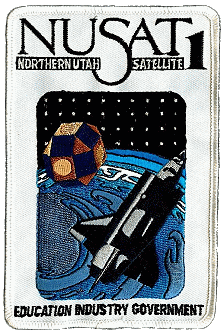 |
![]()
Launch, orbit and landing data
walkout photo |
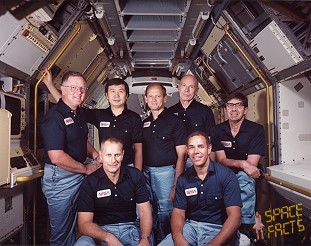 |
||||||||||||||||||||||||||||
alternative crew photo |
Crew
| No. | Surname | Given names | Position | Flight No. | Duration | Orbits | |
| 1 | Overmyer | Robert Franklin | CDR | 2 | 7d 00h 08m 46s | 111 | |
| 2 | Gregory | Frederick Drew | PLT, EV-2 | 1 | 7d 00h 08m 46s | 111 | |
| 3 | Lind | Don Leslie | MS-1 | 1 | 7d 00h 08m 46s | 111 | |
| 4 | Thagard | Norman Earl | MS-2, EV-1, FE | 2 | 7d 00h 08m 46s | 111 | |
| 5 | Thornton | William Edgar | MS-3 | 2 | 7d 00h 08m 46s | 111 | |
| 6 | Wang | Taylor Gun-Jin | PS-1 | 1 | 7d 00h 08m 46s | 111 | |
| 7 | van den Berg | Lodewijk | PS-2 | 1 | 7d 00h 08m 46s | 111 |
Crew seating arrangement
|
 |
|
||||||||||||||||||||||||||||||||
Backup Crew
|
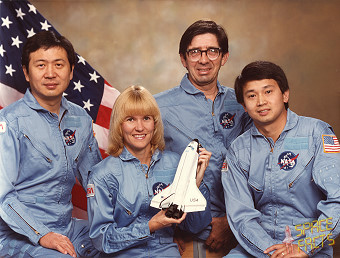 |
|||||||||||||||
Hardware
| Orbiter : | OV-099 (7.) |
| SSME (1 / 2 / 3): | 2023 (2.) / 2020 (3.) / 2021 (3.) |
| SRB: | BI-016 |
| ET: | ET-17 (LWT-10) |
| OMS Pod: | Left Pod 01 (6.) / Right Pod 04 (1.) |
| FWD RCS Pod: | FRC 9 (7.) |
| RMS: | - |
| EMU: | EMU No. 1057 (PLSS No. 1003) / EMU No. 1061 (PLSS No. 1006) |
Flight
|
Launch from Cape Canaveral (KSC) and
landing on the Edwards
AFB, Runway 17.
The launch of Challenger was delayed 2 minutes 18 seconds due to a launch
processing failure. Challenger was initially rolled out to the pad to launch on the STS-51E mission. The shuttle was rolled back when a timing issue emerged with the TDRS-B satellite. When STS-51E was canceled, Challenger was remanifested with the STS-51B payloads. The mission was the second flight of Spacelab, but the first in a fully operational configuration. Spacelab capabilities for multi-disciplinary research in microgravity were successfully demonstrated. The European Space Agency (ESA) designed and developed Spacelab to serve as part of America's Space Transportation System, the Space Shuttle. Spacelab includes various standardized parts, such as habitable modules, pallets and airlocks that can be assembled to meet the needs of a particular mission. Spacelab 3 consisted of a long habitable module, where scientists will work in a shirtsleeve environment, and an experiment support structure, a lightweight carrier bridging the payload bay for experiments requiring direct exposure to space. Spacelab 3 was a multi-disciplinary mission with 15 investigations in five areas of scientific research: materials science, life sciences, fluid mechanics, atmospheric physics and astronomy. Twelve of the investigations were developed by U.S. scientists, two by French scientists and one by Indian scientists. The mission's three materials processing experiments used novel techniques for growing crystals in space. Scientists have predicted that the low gravity space environment will be ideal for growing improved crystals that can be used in infrared detectors and other high technology devices. The gravity gradient attitude was required for this mission specifically to facilitate these experiments. The six Spacelab 3 life science investigations examined animal and human biological processes in the space environment. Four of the investigations are primarily engineering verification tests on four parts of the Ames Life Sciences Payload. The other two examine how the crew adapts to space flight. Before spaceflight, scientists could only predict how fluids would behave in a low gravity environment. Spacelab 3 gave them a quiet microgravity lab for experiments to test these theories. Similar to the previous Spacelab mission, the crew was divided roughly in half to cover 12-hour shifts, with Robert Overmyer, Don Lind, William Thornton and Taylor Wang forming the Gold team, and Frederick Gregory, Norman Thagard and Lodewijk van den Berg as the Silver team. On the mission 15 experiments on five basic discipline areas were performed: materials sciences, life sciences, fluid mechanics, atmospheric physics and astronomy were carried out. Two monkeys and 24 rodents were observed for effects of weightlessness. Some of the experiments were performed in reusable "minilab" facilities inside the habitable module. Five such units being flown for the first time on this mission include two crystal growth facilities, an animal housing complex for primates and rodents, and two units for investigating fluid behavior in low gravity. Scientific research was also be performed by three NASA mission specialists: Don Lind, a high-energy astrophysicist, Norman Thagard and William Thornton, both medical doctors making their second Shuttle flights. Two Getaway Special experiments required that they be deployed from their canisters, a "first" in this program. These were NUSAT (Northern Utah Satellite) and GLOMR (Global Low Orbiting Message Relay Satellite). NUSAT was an air traffic control radar system calibrator. It measured antenna patterns for ground-based radars operated in the United States and in member countries of the International Civil Aviation Organization. The 115-pound (68 kg), 26-sided polyhedron satellite had an expected lifetime of six months. NUSAT was built by Morton Thiokol, Inc., Brigham City, Utah, for a university team headed by Weber State College, Ogden, Utah, in coordination with the Federal Aviation Administration. NUSAT deployed successfully. The GLOMR satellite was a data relay, communications space craft and was expected to remain in orbit for approximately 1 year. The purpose of the 150-pound (68 kg), 62-side polyhedron satellite was to demonstrate the ability to read signals and command oceanographic sensors; locate oceanographic and other ground sensors, and relay data from them to customers. GLOMR was designed and built by Defense Systems, Inc., McLean, VA. GLOMR did not deploy and was returned to Earth. Payload Specialists Taylor Wang and Lodewijk van den Berg tested, if Biofeedback could help against the space adaption syndrome. While participating in the investigation into the destruction of Challenger during STS-51L in 1986, Robert Overmyer discovered that a problem with the shuttle's O-rings, similar to that which led to the disaster, had emerged during the launch of STS-51B. Morton Thiokol engineers told Don Lind after the mission that "you came within three-tenths of one second of dying". It was the problem with the O-rings on the left solid rocket motor on this launch (SRM 16A) that prompted Roger Boisjoly to write his famous memo to Bob Lund about the potential for the O-rings to cause catastrophic failure. |
Photos / Graphics
 |
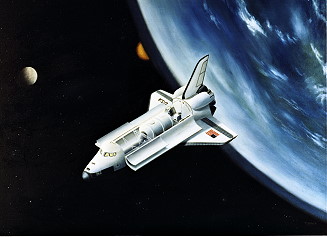 |
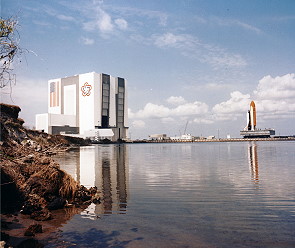 |
 |
 |
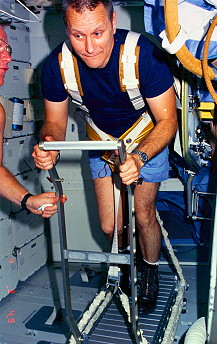 |
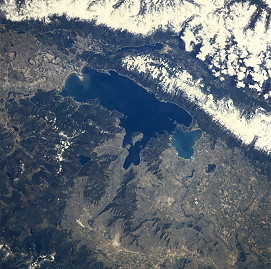 |
 |
 |
 |
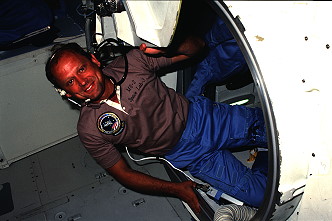 |
 |
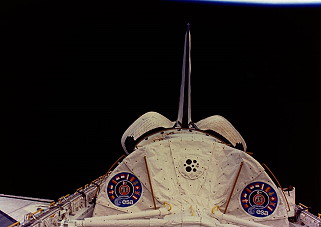 |
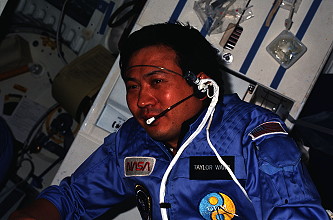 |
 |
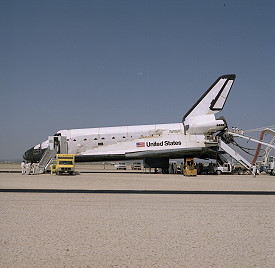 |
| © |  |
Last update on March 27, 2020.  |
 |